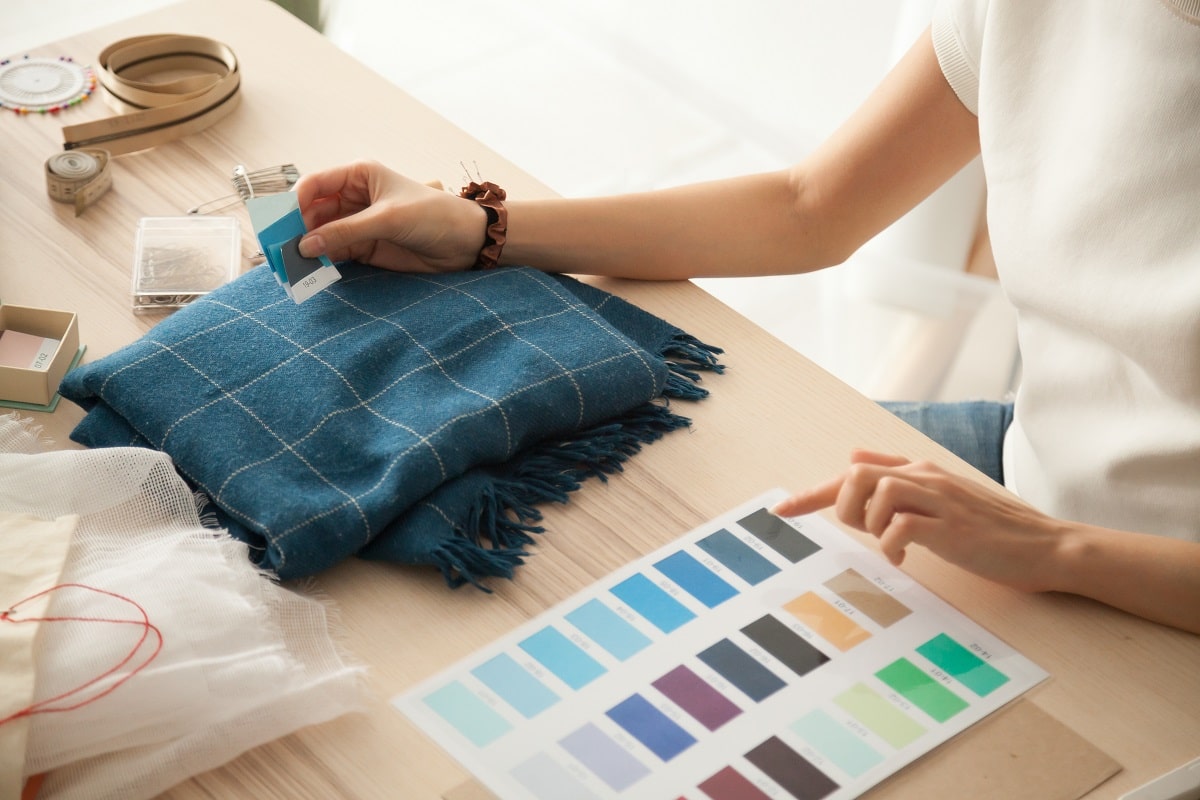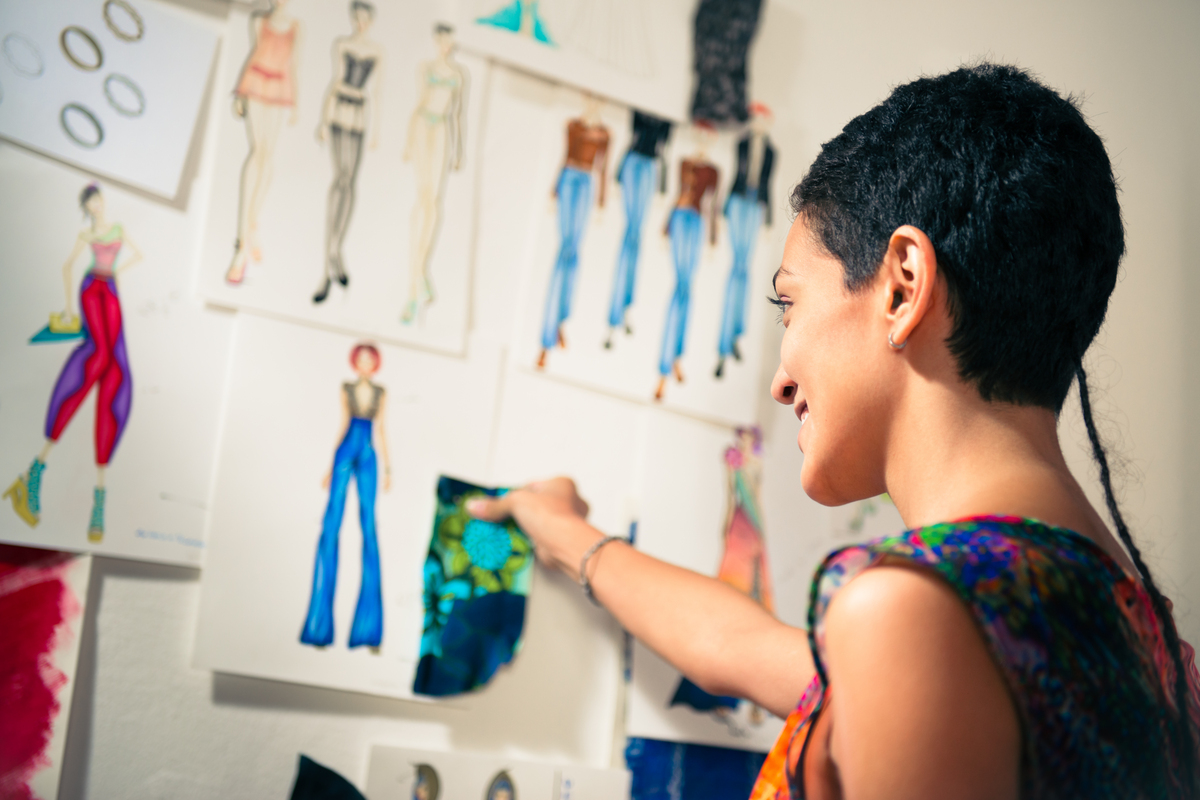Building your design portfolio requires employing a selective, targeted appeal. As design specialist Caletha Crawford explains: “Your first inclination might be to create a portfolio that has really wide appeal, because your goal is to get a job.”
When someone is just starting out, their goal may be to get any job, just to get their foot in the door. While that’s a good attitude—an attitude of being willing to do whatever it takes to get to where you want to go, Crawford advises selectivity.
“Maybe you are a rock star with draping, or you found a passion and a skill that you didn’t know you had in photography,” Crawford says. “Remember that you really want this portfolio to reflect you, and you want to showcase how you would be a great fit for your potential employer.” In order to do that, your portfolio really needs to clearly display your unique personality and talent.
In selecting what to showcase, Crawford advises going back and reviewing your own design history—whether it’s your history with this course, with other classwork, or something outside the scope of school entirely. Review all those things you’ve created, even those things that might reflect your preparation for getting you where you want to go.
The first thing that you want to do is go through all of your past creations, as well as those things that you’ve done with us in this course. You will want to begin selecting from all of those experiences for your portfolio. “Pull out your best pieces,” says Crawford, “because your portfolio should represent the best of your abilities.”
Crawford also cautions to look at each piece beyond merely whether it’s good or not. Look at them in terms of what each piece is going to accomplish. “Think about it,” says Crawford. “If you’re in an interview situation, or you’re sending your portfolio to a potential employer, they only have so much time to go through the material. Unfortunately, you can’t put in all of your amazing work.” So make sure each piece included in your portfolio serves a purpose.
For instance, if you’re a writer and you’re applying for a job at a publication, you would want to go through and look for those pieces that showcase, for example: your long form writing ability, your interviewing skills, or your ability to work really quickly under a tight deadline. Then pull one example of each for your writing portfolio. That’s typically sufficient to briefly show your range and abilities.
You might also want to think about those things that help provide you a story. Part of that story could very well be the process of how you get to your finished product. Your personal story is important.
Why? Because when you think about it, there are likely a lot of people who are applying for the same jobs as you. They may have a similar background in terms of schooling. They might have a very similar degree as that which you have. Thus the great differentiator, says Crawford, “is really going to be you, and how much the employer can see in you.” The question is: What makes you stand out?
To showcase your unique gifts, you may want to show your process. This is similar to when you were in elementary school and your math teacher would say, ‘Show your work.’ This will allow the potential hiring manager to see how you think, how you get from point A to point B, and ultimately how good of a fit you will be.
This deciding factor is critically important, because every company works differently. In some, you might be working within a huge team, doing one task over and over again. In others, you might have a wide variety of responsibilities, so they may want to gain an understanding of your problem solving skills. All of these factors are extremely valuable for your potential employer to know.
If you’re a writer, showing your work may require you showing how a particular assignment was received from your editor, and then how it was fleshed out. This lets you showcase your creativity, or your ability to go out and get the interviews that were necessary. Perhaps you added a fun sidebar to the story. Or were able to turn the article around in a short time-frame.
For fashion designers, this personal narrative may include showing how you took one particular photo—say, of a texture or a color—and how that then inspired you to hand dye your own fabric to create a specific effect. You will then take that same narrative all the way through to the end by styling your final photo shoot in a way that further displays whatever vibe or effect you set out to achieve.
When going through your examples of past work, this is your chance to evaluate. Here, you must decide whether you want to go through and rework some of the pieces. Perhaps there were some pieces that you did earlier in the course that need a more polished finish. Do not feel bad about that.
“It takes time to really refine and produce a portfolio-worthy piece,” says Crawford. At this point in the course, you obviously have a bit more experience. This means you will likely have a bit more confidence in everything that you’re doing, which in turn means that in reworking pieces, you’re going to be able to do it that much better.
Perfection and mastery take time. So take the time to polish off and refine your masterpieces in order to create an irresistible portfolio that truly showcases your talent. “All that time that you put in is definitely going to be worth it when you land that dream job,” assures Crawford.

Fashion and Textile Studies: Design Portfolios Careers
Discover exciting career opportunities in fashion and textile studies. Learn about various roles from design to business, and how to succeed in this dynamic industry.







